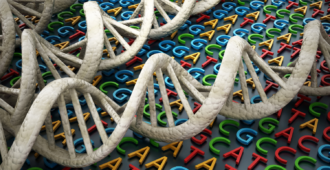Results from a phase I clinical trial of a drug known as ISIS 333611 have been published open-access online in the scientific journal Lancet Neurology on 29 March 2013.
This is the first time researchers have tested the effects of delivering an antisense oligonucleotide directly into the human cerebral spinal fluid (the fluid between the spinal cord) showing that it is both safe and well tolerated in people with the SOD1 form of inherited MND. For information on inherited MND please see our website.
This work suggests that this ‘antisense’ approach may be a good strategy for other neurological disorders.
What is antisense?
Antisense is a type of therapy that causes the ISIS 333611 to directly interfere with the faulty instructions for making a SOD1 protein, thus stopping the production of the disease-causing substance. This is called ‘gene silencing’ as that part of the gene is not ‘heard’ when the final protein is made.
ISIS 333611 works by targeting mRNA, the ‘messenger’ that carries the genetic instructions from the SOD1 gene to the protein-making machinery (for more about mRNA and how proteins are made see our earlier blog post). Instructions in the mRNA for making the SOD1 protein (sometimes called a ‘sense’ sequence) are faulty in people with SOD1 inherited MND, which leads to harmful SOD1 proteins being made.
So if the levels of harmful SOD1 can be reduced, might this be protective? That’s the thinking behind the treatment. By binding to the SOD1 mRNA, ISIS 333611 prevents the production of a harmful SOD1 protein. Indeed, studies in SOD1 positive animal models indicated that reducing the level of SOD1 by antisense therapy increased lifespan. However, targeting the SOD1 gene in this way is a very ‘personalised’ treatment strategy – if it does work it will only work for people who have the SOD1 from of MND.
Results from the trial
Based on the encouraging animal studies, the researchers and ISIS Pharmaceuticals conducted a phase I trial of the antisense oligonucleotide ISIS 333611.
Twenty-one people with SOD1 MND were involved in the study and results from the trial have shown that there were no toxic effects due to increased dosing of the drug and that the drug was safe and well tolerated.
In animal models antisense therapy is found to spread well throughout the central nervous system (brain and spine). However, unlike animal models, the researchers showed that concentrations of ISIS 333611 were lower in the upper end of the spinal cord and brain compared to the injection site. Due to this the delivery site of the drug will probably need to be revisited in future trials.

As this was only a short-term ‘Phase I’ trial it was not designed to test whether this antisense therapy had an effect on MND. This would only be seen with long term treatment and future trials. However, the results are encouraging as they show that this type of therapy is both safe and well tolerated in people with SOD1 MND.
Results make sense
Dr Pietro Fratta (University College London), who is a recipient of a Medical Research Council/MND Association’s Lady Edith Wolfson Clinical Research Fellowship, has written an accompanying commentary on the paper. He said that this study “paves the way for applying antisense oligonucleotides to other forms of genetically determined MND” such as the C9orf72 form of the disease.
However, he stressed that “many hurdles still need to be overcome to bring this treatment to the clinic”.Dr Fratta also cautioned that the longer-term implications of lowering SOD1 protein levels had to be examined. The antisense approach not only targets the harmful mutated SOD1 protein, but will also lower levels of ‘healthy’ normally functioning SOD1, which plays an important role in protecting neurons from damage. So, the antisense treatment approach may be a ‘double-edged sword’ that will require very careful handling.
Reference
Miller, T. M. et al. An antisense oligonucleotide against SOD1 delivered intrathecally for patients with SOD1 familial amyotrophic lateral sclerosis: a phase 1, randomised, first-in-man study. Lancet Neurology 2013 DOI: 10.1016/s1474-4422(13)70061-9 Read the full article here.
Fratta P. Antisense makes sense for amyotrophic lateral sclerosis C9orf72 Lancet Neurology 2013 DOI: 10.1016/s1474-4422(13)70059-0






Comments are closed.